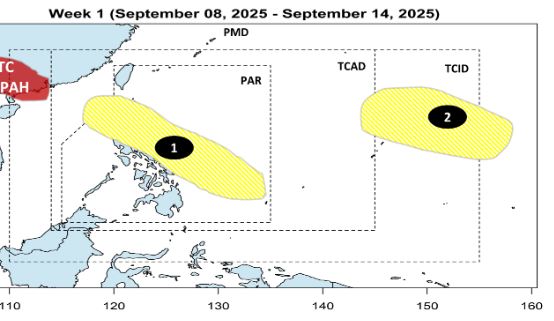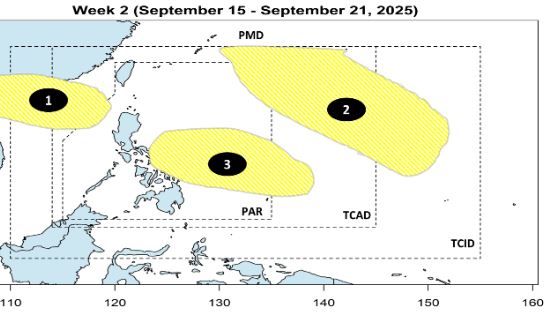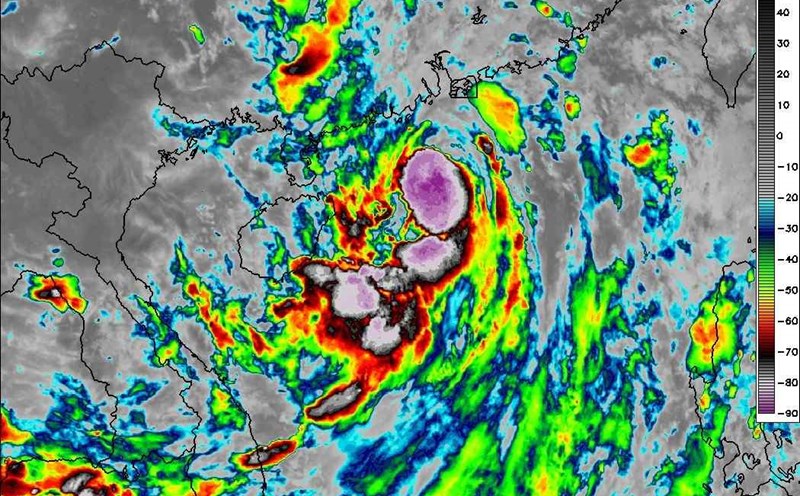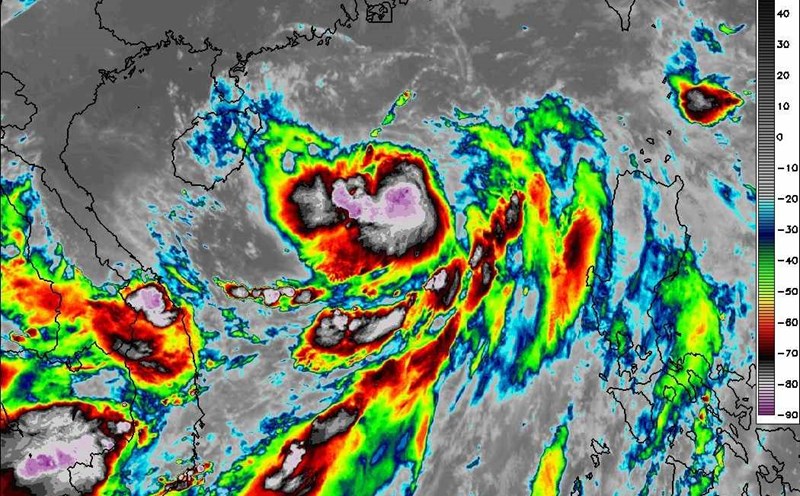On September 8, the Philippine Atmospheric, Geophysical and Astronomical Services Administration announced the forecast for storms/low pressure in the 2 weeks from September 8-21, 2025.
During the week of September 8-14, 2025, Typhoon No. 7 Tapah will be on the mainland southwest of Guangdong province (China). At 1:00 a.m. on September 9, storm No. 7 on the mainland of Guangxi province (China), with an intensity below level 6. The northwest sea area of the North East Sea is subject to level 3 natural disaster risk.
Also during the week of September 8-14, low pressure 1 is expected to appear in the southeast of the Philippine Forecast Area (PAR), with a low chance of strengthening into a storm. The low pressure is expected to move towards Eastern Visaya - Luzon.
Meanwhile, low pressure 2 is expected to appear east of the Philippine typhoon forecast area (TCID), with a low probability of strengthening into a typhoon.

During the week of September 15-21, 2025, low pressure 1 is expected to leave PAR, heading towards the North East Sea area. Low pressure 2 is expected to move northeast of PAR, closer to the Philippines. Both of these depressions are still likely to strengthen into low-level storms.
Meanwhile, low pressure 3 is expected to appear within the PAR, close to the Philippine mainland and also have the potential to strengthen into a tropical depression or low-level storm.

Previously, PAGASA forecasted that there could be 2 to 4 storms in September, most of which are likely to enter the East Sea. The resonance impact of the La Nina phenomenon has caused the risk of floods and landslides in the area to increase significantly.
Current climate models show that the probability of a short-term La Nina from September to December is increasingly clear, with the possibility of exceeding 55%. Once this condition is maintained, the year-end storm season in the East Sea will be more complicated than the average of many years.
PAGASA emphasized: History shows that previous La Nina floods have always been associated with severe monsoons, severe agricultural damage and deep flooding in many areas. This agency called on local authorities, natural disaster prevention forces and people to promptly prepare and proactively take response measures.









